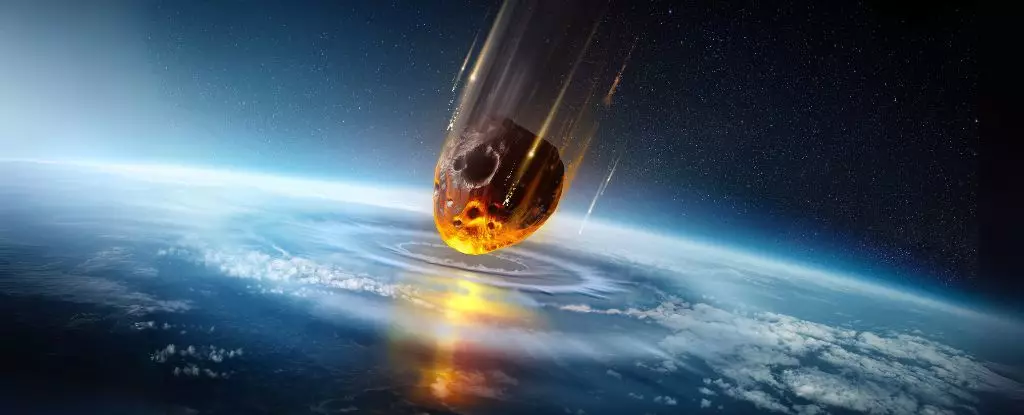For decades, the narrative surrounding meteorite impacts has predominantly centered on destruction and chaos. Yet, recent groundbreaking research challenges this conventional wisdom by positioning colossal impacts as potential catalysts for life’s emergence and sustenance. When a 1.6-kilometer asteroid colliding with present-day Finland created a vast crater 23 kilometers wide and plunging nearly 750 kilometers deep, it set off a series of geological transformations that, surprisingly, may have fostered microbial colonization rather than eradicated it. This paradigm shift prompts us to reevaluate the impact’s legacy—not solely as a destructive force but as an unlikely birthplace for life in planetary crusts battered by cosmic forces.
Studies like the one focused on the Lappajärvi impact structure in Finland are initiating a renaissance in astrobiology. Instead of perceiving impact sites solely as scars of planetary violence, scientists now see them as unique laboratories—hotspots where fractured rocks and heated waters could have provided the perfect environment for microbial life. These hydrothermal systems, formed from impact-driven fracturing and mineralization, might have sustained communities long after the initial chaos subsided. This view contributes to a broader narrative: that life is remarkably adaptable and can exploit even the most hostile environments, including those created by celestial collisions.
Pinpointing the Moment of Microbial Infiltration
The most striking aspect of this recent research is its ability to determine an exact timeline for microbial colonization in the aftermath of a massive impact. Utilizing sophisticated isotopic biosignature analysis and radioisotopic dating, scientists demonstrated that microbial sulfate-reducing bacteria thrived approximately 73.6 million years ago—about five million years after the asteroid’s impact. These microbes, which rely on the reduction of sulfate to hydrogen sulfide, played an active role in mineral formation, leaving behind unmistakable chemical signatures, notably sulfur-depleted pyrite.
This provides compelling evidence not only that life took hold within the hydrothermal system but that it did so relatively soon after the impact event—a mere few million years in geological terms. Furthermore, the subsequent mineral deposits and temperature data reveal that microbial activity persisted for a significant period, seducing us to reconsider the resilience of life under extreme conditions. The ability to precisely date this colonization confronts prior assumptions that microbial settlements could only emerge in the distant, slow aftermath of impact events; instead, it establishes impact-generated environments as dynamic ecosystems from very early on.
Implications for Understanding Life’s Origin and Survival
This discovery does more than just rewrite the story of past impact events; it offers profound insights into how life could originate and endure amid planetary upheavals. The realization that microbes can colonize fractured rocks beneath impact craters challenges the idea that catastrophic events serve only as termination points for biospheres. On the contrary, they might serve as “launchpads,” creating habitable niches filled with heated water, organic molecules delivered by asteroids, and mineral-rich environments conducive to life’s earliest forms.
More intriguingly, these findings resonate with broader questions about extraterrestrial habitability. Impact craters—found on Mars, Europa, and other celestial bodies—might harbor similar hydrothermal systems that could support microbial life. The presence of amino acids and organic molecules on meteorites and moons suggests that such environments could be universal cradles of life. By understanding how microbes thrived in Finland’s ancient impact structures, we gain a blueprint for seeking life beyond Earth.
Reevaluating the Role of Impact Events in Astrobiology
The traditional view equates impacts with planetary sterilization, yet this research underscores their potential as fostering environments for life’s persistence and development. Large impacts may generate long-lived hydrothermal systems, which, after cooling, become reservoirs of microbial activity. These habitats could have acted as refuges, enabling life to recover, adapt, and perhaps even evolve in the aftermath of extreme geological disturbances.
On Earth, impact-generated hydrothermal systems might explain some of the earliest evidence for life, further linking planetary geology with biological evolution. Extending this concept into planetary exploration, missions to Mars or icy moons could prioritize impact sites as prime locations for biosignature detection. The resilience of microbes to such chaos encourages a more optimistic outlook on the universality of life—an outlook grounded in the hard minerals and isotopic signatures preserved in impact structures.
A New Lens on Earth’s and Cosmos’ Biological Potential
In essence, this research invites us to view planetary impacts not only as destructive moments but as pivotal events capable of sowing the seeds of life. It forces scientists and enthusiasts alike to reconsider the delicate balance between planetary violence and biological vitality. The exquisite detail in dating microbial activity under the Lappajärvi crater exemplifies the synergy of geology, chemistry, and biology—an interdisciplinary frontier that promises to reshape our understanding of the origins of life.
Moreover, these insights fuel a provocative question: could the processes observed in Finland’s ancient impact site be a common feature across the universe? Are impact hydrothermal systems the universal cradles where life first takes foothold, continually being “rebooted” in planetary histories? If so, then our quest to find extraterrestrial life might be more promising than previously imagined, rooted in the cosmic dance of colliding worlds.

